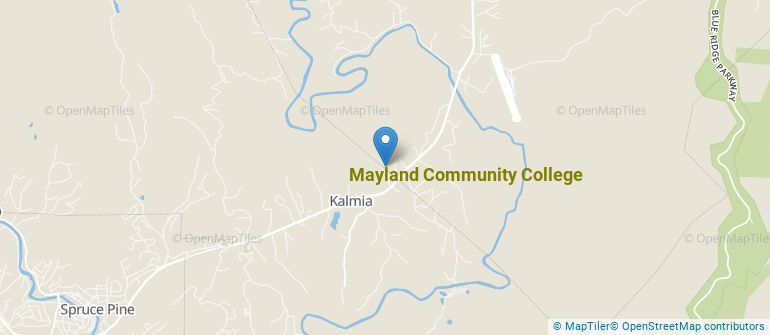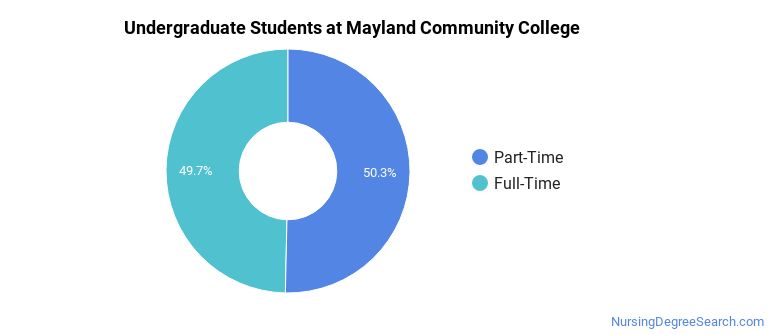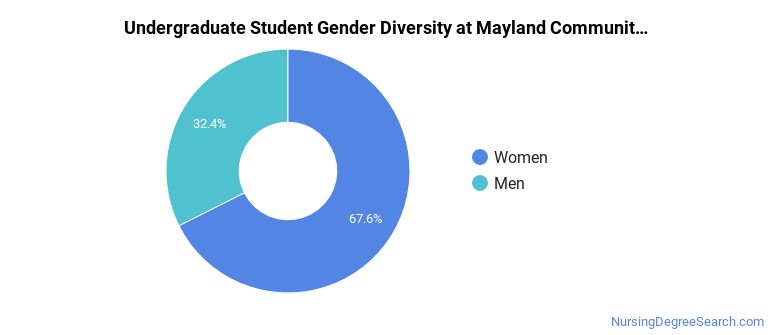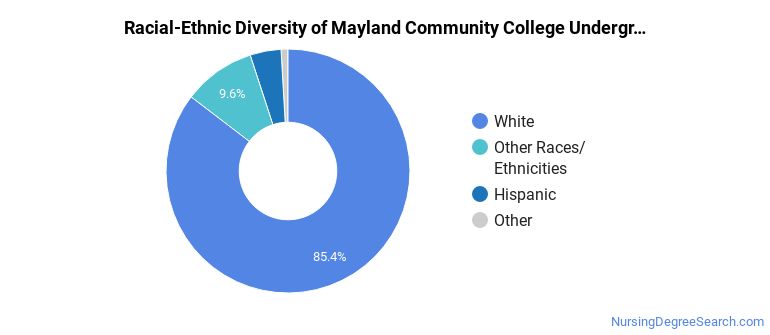Mayland Community College Nursing Programs
Mayland Community College is a public institution situated in Spruce Pine, North Carolina. The rural area surrounding the school is great for students who prefer living in a country setting.
Where Is Mayland Community College?

Contact details for Mayland Community College are given below.
| Contact Details | |
|---|---|
| Address: | 200 Mayland Drive, Spruce Pine, NC 28777 |
| Phone: | 828-765-7351 |
| Website: | www.mayland.edu |
How Do I Get Into Mayland Community College?
You can apply to Mayland Community College online at: https://www.mayland.edu/admissions/how-to-apply/
Can I Afford Mayland Community College?
Mayland Community College Undergraduate Student Diversity

Gender Diversity
Of the 219 full-time undergraduates at Mayland Community College, 32% are male and 68% are female.

Racial-Ethnic Diversity
The racial-ethnic breakdown of Mayland Community College students is as follows.

| Race/Ethnicity | Number of Grads |
|---|---|
| Asian | 0 |
| Black or African American | 2 |
| Hispanic or Latino | 9 |
| White | 187 |
| International Students | 0 |
| Other Races/Ethnicities | 21 |
Mayland Community College Nursing Concentrations
The table below shows the number of awards for each concentration.
| Major | Associate’s | Undergraduate Certificate | TOTAL |
|---|---|---|---|
| Registered Nursing | 8 | 0 | 8 |
| Licensed Practical/Vocational Nurse Training | 0 | 5 | 5 |
| Nursing Assistant/Aide and Patient Care Assistant/Aide | 0 | 0 | 0 |
| TOTAL | 8 | 5 | 13 |
References
*The racial-ethnic minorities count is calculated by taking the total number of students and subtracting white students, international students, and students whose race/ethnicity was unknown. This number is then divided by the total number of students at the school to obtain the racial-ethnic minorities percentage.
More about our data sources and methodologies.
